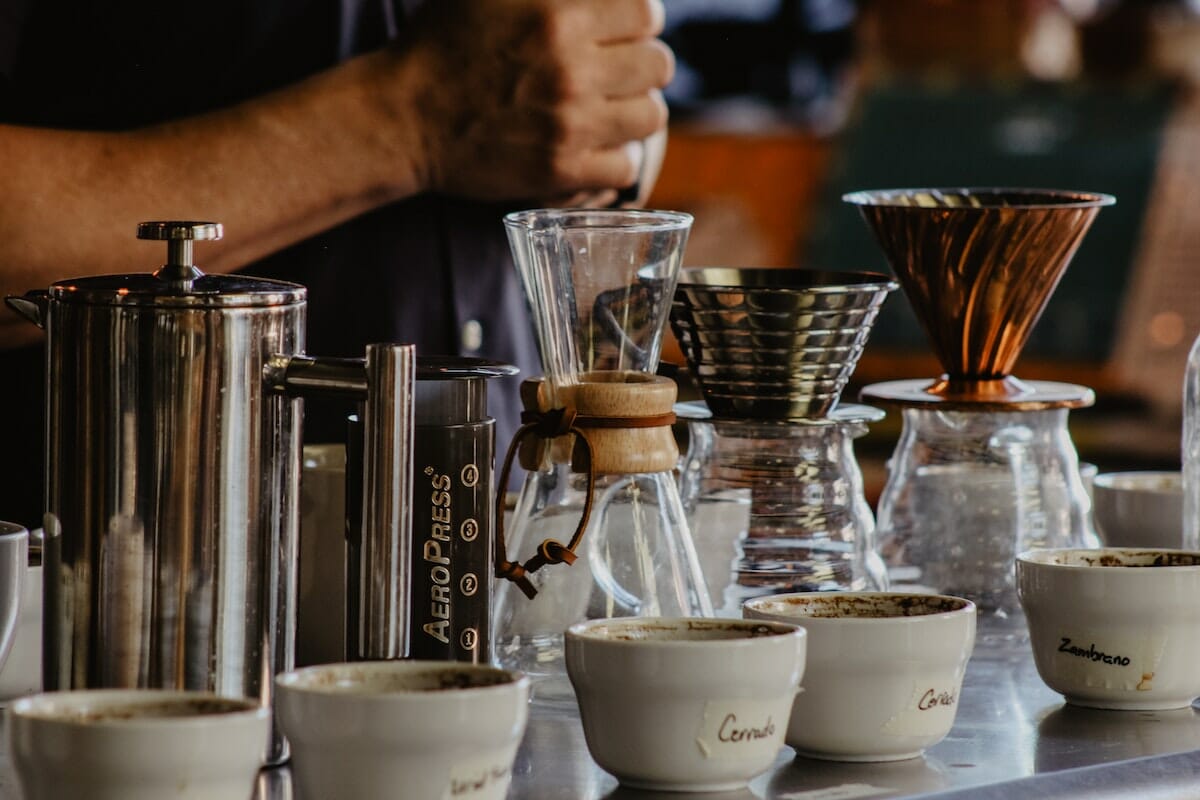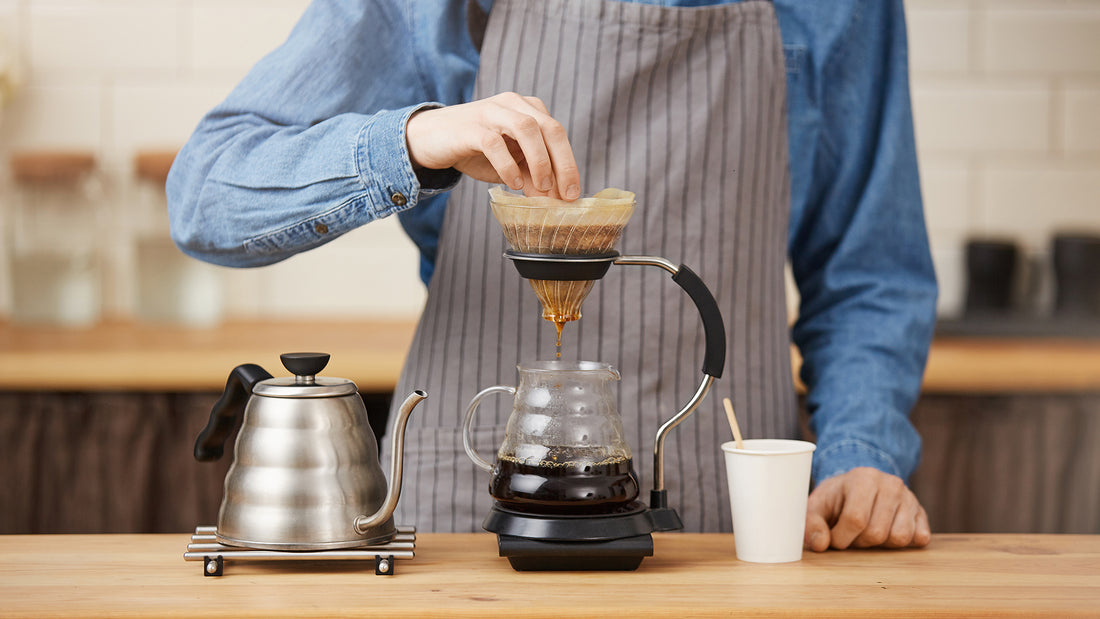The Ultimate Comparison of Popular Coffee Brewing Methods for Home Baristas
The Ultimate Comparison of Popular Coffee Brewing Methods for Home Baristas
Blog Article
Checking Out the Art of Coffee Brewing: A Comprehensive Guide to Improving Your Cup
The art of coffee developing is a multifaceted self-control that combines scientific research with personal expression, where the choice of beans, water quality, and developing techniques converge to create a polished sensory experience. Recognizing the subtleties of numerous coffee beans, specifically the distinctions in between Arabica and Robusta, is vital for any enthusiast. Moreover, the choice of proper equipment and meticulous attention to developing criteria can considerably influence the last end result. As we check out these components, one must consider exactly how even minor changes can cause profound changes in taste and fragrance-- what might these modifications disclose regarding your optimal cup?
Comprehending Coffee Beans
To truly appreciate the art of coffee developing, one need to first recognize the fundamental aspect: coffee beans. These small seeds, generally stemmed from the Coffea plant, are vital in establishing the taste profile, aroma, and general quality of the made drink. Coffee beans largely come under 2 categories: Arabica and Robusta. Arabica beans, known for their delicate flavors and higher acidity, are commonly preferred by lovers. On the other hand, Robusta beans have a stronger, more bitter preference and greater caffeine material, making them ideal for coffee blends.

Furthermore, the handling approach-- whether cleaned, all-natural, or honey-- affects the beans' final taste. Comprehending these components enables brewers to select the appropriate beans that align with their liked taste account, eventually boosting the coffee developing experience. coffee brewing methods. This understanding is important for any person aspiring to grasp the craft of making the perfect cup of coffee
Developing Techniques Explained
Lots of enthusiasts find that the selection of developing method dramatically affects the last flavor and scent of their coffee. Each technique utilizes different removal strategies, influencing the coffee's character and splendor.
Drip developing, among one of the most popular approaches, utilizes a device to trickle hot water with ground coffee, creating a consistent and tidy cup. French press, on the other hand, immerses coffee premises in hot water, permitting a fuller body and more robust flavor, as oils and great fragments stay in the mixture.
Pour-over developing supplies a thorough method, where water is manually poured over coffee grounds, enabling exact control over removal time and temperature, leading to a intense and nuanced mug.
Espresso, a focused coffee made under stress, is known for its strong flavor and velvety structure, acting as the base for different coffee drinks, consisting of cappuccinos and cappucinos.
Vital Equipment Needed
What equipment is essential for making a fantastic mug of coffee? The structure of any kind of successful Full Report coffee developing procedure depends on quality equipment tailored to your preferred technique. A reputable coffee mill is vital; newly ground beans considerably enhance flavor and aroma. Choose a burr mill, which makes certain consistent bit size, vital for optimum removal.
Following, consider your developing device. Alternatives range from drip coffee manufacturers and pour-over setups to French presses and espresso makers. Each method provides distinct taste profiles and brewing techniques, so pick one that lines up with your taste preferences.
An accurate range is additionally very useful, allowing you to measure coffee and water precisely, which is essential for consistency. Additionally, a thermometer can help keep track of water temperature level, as it straight affects removal quality.
Learning Water Top Quality
The high quality of water made use of in brewing coffee plays a considerable role in establishing the last flavor profile of the mug. Various aspects add to water high quality, including mineral web content, pH level, and overall pureness. Preferably, water needs to be devoid of pollutants and impurities, as these can detrimentally influence the taste of coffee.
Minerals, such as calcium and magnesium, boost the removal of tastes from the coffee premises, while preserving a well balanced pH degree-- around 6.5 to 7.5-- is vital for optimum extraction. Water that is also soft may bring about under-extraction, resulting in sour or weak flavors, while overly difficult water can create a bitter or harsh cup.
For the best results, filtered water is suggested, as it decreases the existence of chlorine and other unfavorable materials often found in tap water. Furthermore, consider using water with a Complete Dissolved Solids (TDS) degree between 150-200 ppm, which is normally excellent for coffee brewing. By understanding water top quality, you can lay a solid structure for accomplishing a continually exceptional cup of coffee, allowing the distinct characteristics of your picked beans to beam through.

Tips for Flavor Improvement
Enhancing the taste of your coffee can dramatically elevate your brewing experience and draw out the unique subtleties of your picked beans. To accomplish this, think about a number of essential elements that influence preference.
To start with, the grind size plays an important function. A finer grind increases removal, resulting in bolder flavors, while a coarser work returns a milder cup. coffee brewing methods. Change your grind according to your brewing method to achieve optimum outcomes
Second of all, trying out mixture time. Over-extraction can result in bitterness, while under-extraction outcomes in a sour preference. Goal for a brew time that balances these extremes, generally in between 2 to four mins, depending upon Look At This your method.
Brewing with water that is as well hot can burn the coffee, while water that is as well cool might stop working to remove adequate flavor. In conclusion, the art of coffee developing is a complex technique that requires a deep understanding of different elements, including bean choice, brewing approaches, and water high quality. By integrating these components, coffee lovers can raise their developing strategies, resulting in a cup that not only pleases individual preferences yet likewise showcases the rich intricacy of coffee flavors.
The art of coffee brewing is a diverse self-control that merges science with personal expression, where the selection of beans, water top quality, and developing techniques assemble to create a refined sensory experience.To absolutely appreciate the art of coffee developing, one must first comprehend the foundational aspect: coffee beans. Developing with water that click to read is also hot can swelter the coffee, while water that is also amazing may fall short to remove adequate flavor. In final thought, the art of coffee developing is a diverse method that requires a deep understanding of different elements, including bean selection, developing approaches, and water top quality. By incorporating these components, coffee lovers can boost their brewing strategies, resulting in a cup that not only pleases individual preferences yet also showcases the abundant intricacy of coffee tastes.
Report this page